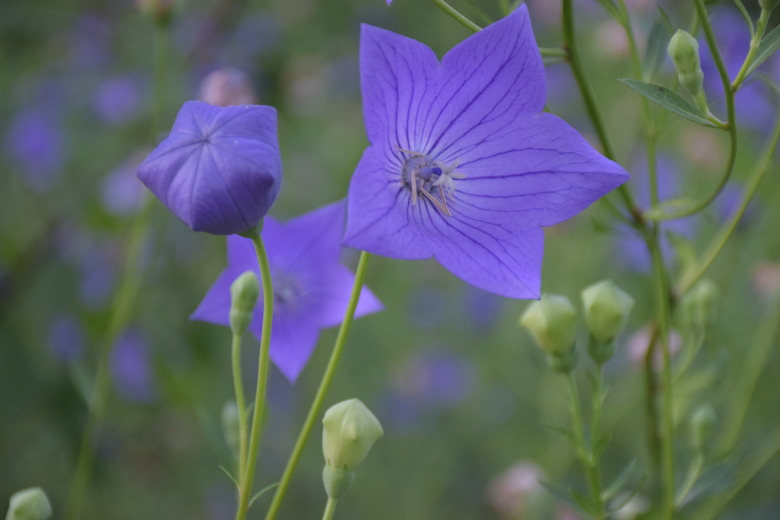How To Deadhead Balloon Flowers
We may receive a commission on purchases made from links.
The swelling buds of the balloon flower (Platycodon grandiflorus) give this small, flowering perennial its common name. A native of east Asia, it thrives in U.S. Department of Agriculture plant hardiness zones 4 through 8. Deadheading the white, pink, blue, or violet blossoms when they fade encourages more flower buds to form, extending the bloom time through the summer months.
About the Balloon Flower
About the Balloon Flower
This 1- to 3-foot-tall and 1- to 4-foot-wide perennial is used in borders, rock gardens, cottage gardens, and containers. The five-petal flowers appear in spring and early summer. As the buds develop, they turn from green to their final color, growing into five- pointed, balloonlike forms and then popping open to reveal five petals.
The 2- to 3-inch-wide flowers feature five pale yellow anthers and a blue stile in the center. The lavender, blue, and violet cultivars feature dark purple veins, and the pink varieties have rosy veins on their petals. The white cultivars may be pure white or may have blue veins. Some cultivars have double flowers.
Planting Balloon Flower Seeds
Planting Balloon Flower Seeds
Balloon flowers aren't picky about soil types, but they prefer a sunny or partially shaded, well-drained garden bed. Dig in 2 to 3 inches of compost to lighten the soil and add organic matter. Lightly water and then scatter the seeds over the soil. Do not cover; the seeds need light to germinate.
Alternatively, plant the seeds in moist seed-starting mix in paper or peat pots. Cover the pots with plastic wrap and place them in a brightly lit location. At 65 to70 degrees Fahrenheit, the seeds will germinate in 21 to 30 days. Remove the top portion of the biodegradable pot and then transplant the seedlings in their pots into the garden bed, spacing them 12 to 18 inches apart.
Caring for Balloon Flowers
Caring for Balloon Flowers
After planting seeds or transplanting seedlings, keep the soil evenly moist but not waterlogged until the plants are established in the garden. Reduce watering to 1 to 2 inches weekly. While balloon flowers tolerate some drought, they produce more flowers when watered regularly.
If your soil is poor, scratch an all-purpose, slow-release flower fertilizer into the soil around the plants in early spring. In addition, spread a few shovelfuls of well-decomposed compost over the garden bed in fall. Container-grown plants need extra water and nutrients, such as a biweekly application of a 15-30-15 soluble fertilizer, because the potting mix dries out faster than garden soil. Always water thoroughly after fertilizing.
Deadheading the Flowers
Deadheading the Flowers
Deadheading the fading flowers on many types of perennials before they set seed encourages more blossoms and extends flowering until late summer and early fall. Sterilize your cutting tools by dipping the blades in rubbing alcohol and allow them to air- dry. Put on gloves and safety googles before you pinch back or cut off the old flowers regularly through the summer.
You can also cut tall or floppy plants back by half in late spring or midsummer to make a bushier mound of foliage. After pruning in summer, balloon flowers may have another flush of blossoms in fall. As winter approaches, leave a few flowers on the plant to produce seeds. You can leave them on the plants to naturally scatter in the garden or harvest the seed pods and store them in an airtight container in a cool, dry location until early spring.
Frost will kill the remaining flowers and foliage. You can trim back the dead leaves but leave 2 inches of the stems intact. This gives you a point of reference so you don't accidentally damage their fragile root system when preparing the flower garden for spring.
